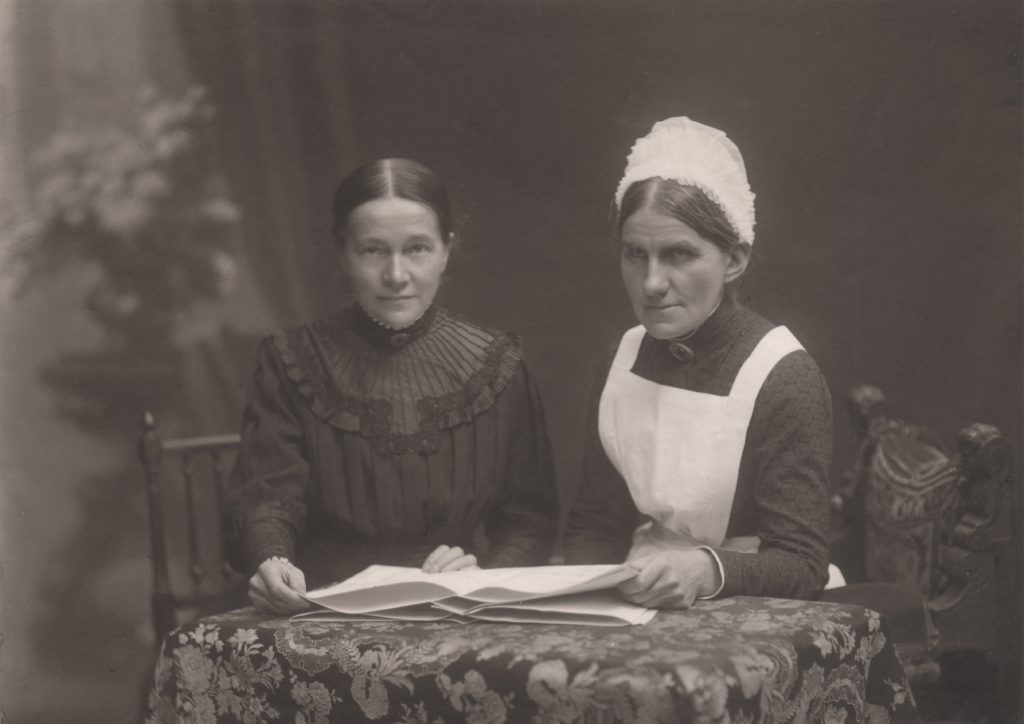This post is also available in:
 Deutsch
Deutsch
Surgeon – entrepreneur – pioneer of nursing care
Even in our century, Anna Heer would be an exception, even more so she was in her time. To realize her vision, she demanded her own hospital in 1896 – seventy-five years before the introduction of women’s suffrage in Switzerland. Almost five years later, the Swiss School of Nursing (Schweizersiche Pflegerinnenschule) in Zurich opened its doors. This success was not a gift of fate, but the fruit of persistent hard work.
“My father had a small factory and a large family,” recalled Anna Heer. Isaak Heer initially produced shoes in Olten, but in 1877, he moved his business to Suhr, where he produced elastic goods. Little is known about her mother. She gave birth to eleven children. Four died early, seven reached adulthood. After graduating from the girls’ school in Aarau, Anna Heer moved to Zurich, first attended the arts and crafts school, then the Gymnasium. She was fortunate to find a home with Kaspar and Bertha Grob. The couple became a kind of foster parents who encouraged her and later successfully supported her in her ventures. When Anna moved in, secondary school teacher Kaspar Grob had already been promoted to education secretary of the Canton of Zurich. From 1893 until his death in 1901, he was a member of the Zurich City Council.
After graduating from Gymnasium in 1883, Anna Heer began studying medicine at the University of Zurich. Other female students were mainly interested in gynecology and pediatrics. Anna Heer’s favorite subject was surgery. After the final examinations, she spent several months in London for further training, where she also encountered modern ideas of nursing. Anna Heer opened her own practice in 1889. It helped that she had already replaced Marie Heim-Vögtlin, the first Swiss female doctor, on her maternity leave.

Anna Heer cared for some of her seriously ill patients in the Red Cross nurses’ hospital (today Careum). Here she met Ida Schneider in 1892, a six-year younger nurse. The two women befriended each other and pursued their big plans together: reform of nursing training and organisation of nurses.
After the opening of the School of Nursing and the Women’s Hospital in Zurich-Hottingen in 1901, Anna Heer mastered an incredible workload. She managed the enterprise, was chief physician, continued her private practice at Untere Zäune 17 and taught at the nursing school from eight o’clock in the evening. Her commitment to the hospital and school, apart from the treatment of private patients, was free of charge.
In those years, Anna Heer also carried more and more responsibility for her family. Maria, one of her sisters, now also lived with the Grob couple. She had attended the teacher-training seminar in Aarau, decided to continue her studies after a stay in Italy and then taught French and Italian at the girls’ school for decades. Father Isaak Heer, unlike his daughter, was a rather unsuccessful entrepreneur. When Anna Heer opened her practice in 1889, the family moved to Zurich. It is unclear whether they intended to live at the daughter’s expense in the future. A few years after the move, her parents lived at separate addresses. Anna Heer had finally assumed the role of head of the family.
Anna Heer also pursued her goal of forming a nurses’ association to represent their interests. The Zurich section gradually developed from an employment agency. In 1910, the first two sections, Bern and Zurich, merged to form the Swiss Nursing Association (today Schweizer Berufsverband der Pflegefachfrauen und Pflegefachmänner SBK), which Anna Heer presided over until 1916.
Due to competence problems with one of the doctors, Ida Schneider retired from her position as head nurse in February 1914. The outbreak of the First World War a few months later posed enormous financial and organizational problems. For a short time, Ida Schneider returned to her workplace. Even before the outbreak of the international catastrophe, the nursing school had always calculated tightly. As fewer and fewer people could afford the private department, the money became even scarcer.
Shortly after the end of the war, December 9, 1918, Anna Heer died of sepsis. In the end, the duty-conscious woman was unable to successfully hand over her inheritance.
—
Text: Verena E. Müller
